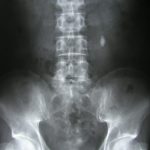Contrary to the belief of many, having a bulging or herniated disc does not mean surgery is necessary. But how can that be when many say otherwise? My surgeon, my neighbor, the internet all say surgery is necessary for this issue. Here is the deal…everything you read on the internet is not true. The past experience of a friend, family member, or neighbor does not constitute sound medical advice. And past results of others do not predict future results (just like investing). And the surgeon…well it is the opinion or recommendation of a surgeon. They do surgery. Of course they will suggest surgery. This is not to bash surgeons or say all spine surgery is wrong, but many are unnecessary (even some surgeons are starting to admit this).
So how or why is this advice any better? Its not necessarily…it is to present some facts and to make a person think before they undergo a serious medical procedure. Good results are not guaranteed with any surgery (its in the fine print but many ignore it). They all come with risks (that it will not even work). That you could be worse on the other side of the surgery. Should one really have a surgery without ALL the facts?
If one is to actually look at the literature on this topic, they will find out “abnormalities” of the spine (bulges or otherwise) are found in people without issues a crazy high percentage of times. Boden and colleagues found “degenerative changes” (i.e. normal aging) in 59% of individuals between the ages of 40 and 60. Another group, Brinjikji et al noted 50% of healthy individuals in their 40’s had a disc bulge and another 33% had at least 1 “herniated” disc. Clearly if such a high percent of people without back pain have these “abnormalities” then how can we TRULY equate these changes on imaging to ANY person’s problems? The answer is WE CAN’T!!!
In truth, back pain is one of the most complex medical issues currently treated in this country and results in astronomically high costs (we are talking tens of billions of dollars each year). This amount rivals heart disease, diabetes, and cancer. Why does it cost so much? Well…this covers visits to primary care doctors, orthopedics, neurosurgeons, multiple imaging, injections, various therapies, surgery, failed surgery revisions, complications from surgery. Not to mention there is time off work, possible disability, and addiction to pain medications we are reading about now.
Where (When) will this end?
It will end when people are ready to actually confront their back pain, take ownership, and not look for someone else to “FIX” their issue. To not demand imaging to find something, because chances are IT won’t change the treatment plan or outcome. It will end when doctors stop over-imaging patients with just back pain and actually follow the medical guidelines (they were created for a reason). This is not meant to dismiss those suffering with back pain, but there are very specific reasons for imaging the spine and short of those findings, imaging is not advised. In fact, imaging when not advised can cause more harm than good per Flynn et al.
What harm you ask?
The psychological harm done by telling someone they have a bulging or herniated disc to begin with. People believe they must have surgery for these issues, yet the data above says otherwise. Anxiety, fear, and depression often result as well. Then we have avoidance of activities because people think they are going to harm their back. Significant disability and chronic pain can result from mismanagement of this condition. How is any of this helpful for anyone?

The medical community has FAILED tremendously in treating back pain in the last few decades. BUT change for the better can happen. An article in The New Yorker by Atul Gawande in 2015 speaks to this failure and how unnecessary medical care is actually HARMING people with unnecessary care. He goes on to write “It isn’t enough to eliminate unnecessary care. It has to be replaced with necessary care.” In the article he writes how a solution is possible and shares the story of an individual with back pain who had imaging and was scheduled for surgery. The doctor wanted to FUSE his spine because of a herniated disc seen on imaging. This individual was sent for a 2nd opinion who advised against surgery and provided with an alternative treatment path. The end to a long story…he got better with NO SURGERY.
Another path?…the medical community must provide this for our patients. We must educate our patients on the FACTS (not the facts that benefit our wallets). We must help our patients and be willing to offer that other path, even if we are not the best person to help them. So for those out there thinking imaging, injections, surgery is what is necessary for a bulging or herniated disc, there is another path. Even if you happen to have one, chances are it was there long before your back pain even began just like all those people found to have these findings who do not have pain.
Are we ready for a solution to the back pain epidemic?
Looking for some answers? Try Starting HERE
Boden et al. Abnormal magnetic-resonance scans of the lumbar spine in asymptomatic subjects. A prospective investigation. J. Bone Joint Surg. Am. 1990;72:403-408.
Brinjikji et al. Systematic Literature Review of Imaging Features of Spinal Degeneration in Asymptomatic Populations. Am J Neuroradiol. 2015;36:811–16.
Flynn et al. Appropriate Use of Diagnostic Imaging in Low Back Pain: A Reminder That Unnecessary Imaging May Do as Much Harm as Good. J Orthop Sports Phys Ther 2011;41:838-846.
Gawande, A. Overkill. An avalanche of unnecessary medical care is harming patients physically and financially. What can we do about it. The New Yorker. May 11, 2015.
